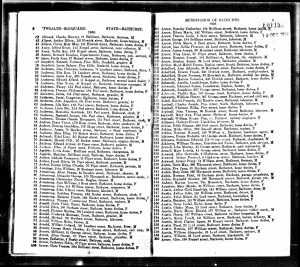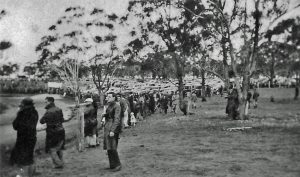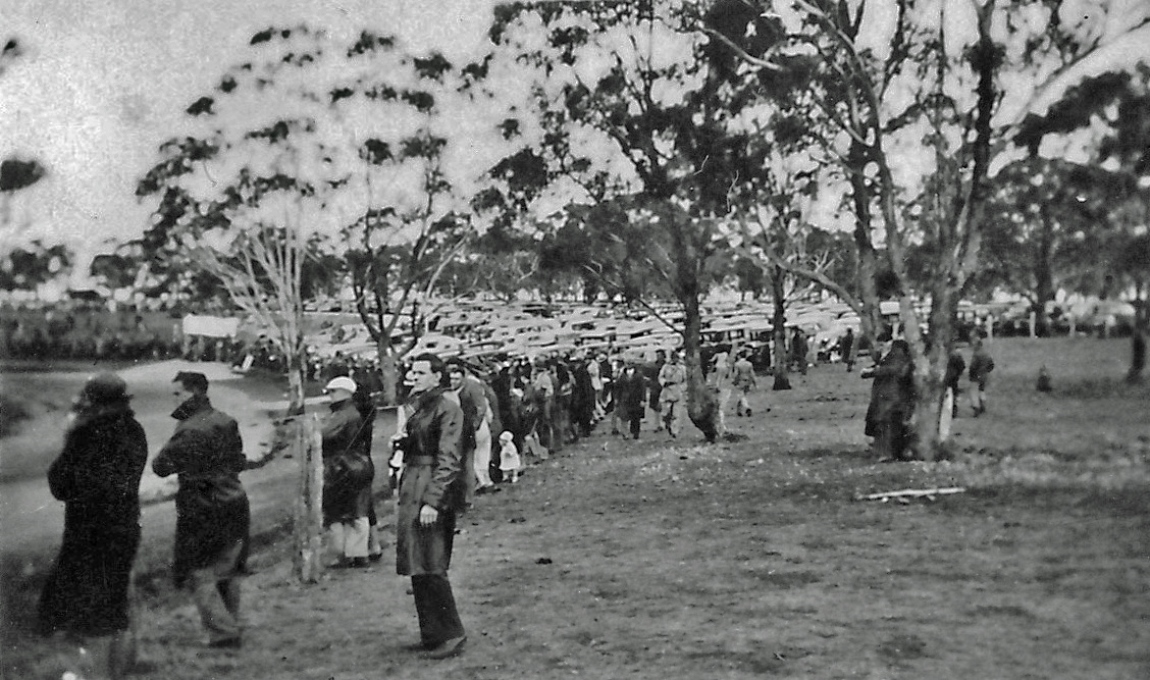“They are still in drought in terms of a Bathurst victory. Still waiting for that win. The longest losing streak in the history of the race. I’m calling a little early perhaps because this is after all, Mount Panorama” –Neil Compton on the last lap of the 2004 Bathurst 1000.
Gazing downwards towards the land beneath it, Mount Panorama is located in the small country town of Bathurst, who is host to the Australian sporting icon known to each and every Australian who hears of it. In a town known for its excessive number of roundabouts and journalism-focused universities stands Mount Panorama, one of the greatest car racing tracks in the world. Living less than five minutes away from the racetrack which opened in 1938 was my Great Grandmother Mary Maude Jago Hayes. Originating from Sydney, several hours away from Bathurst, Mary moved to Bathurst in 1936 to work as a nanny for a friend’s children. From the opening race, she became a regular spectator of races from the start and finish line of the racetrack that is Mount Panorama, regaling my father with stories that were then passed to me. Most stories were of races that took place at the track throughout the years, instilling a love of motor racing in my grandfather, father, and myself. She once told the story of being stuck in traffic on the way to a race for several hours because of the tens of thousands of people making the trek to the race.

Whilst in the struggle of the era that was known as the Great Depression, many in the regional town of Bathurst were searching for ways in which to decrease sky-high unemployment rates, none as actively as the Mayor Martin Griffin. Proposing a tourist drive that would take advantage of the beautiful landscapes that featured upon what was known at the time as Bathurst’s Bald Hills, Mayor Griffin argued that the road would help increase employment during this time period, creating thousands of jobs and increasing tourism for the region. (“Fast facts – Bathurst 1000″ and “Mount Panorama – Humble Beginnings”).
The land that would eventually become Mount Panorama originally belonged to the McPhillamy family, whose patriarch Walter J. McPhillamy had previously been the Mayor of Bathurst. Seeing the true value that the land held for the region, McPhillamy donated it to the local government. In appreciation of the donation, a park was constructed inside the center of the track that remains to this day. McPhillamy Park allows where hundreds of fans to gather on race days to view high speed racing from a safe and comfortable location.
As early as 1935, a year before construction of the track began, several car enthusiast clubs in the region approached the city council and New South Wales government, proposing that the tourist road be slightly altered so that it could be also utilised as a motor racing track. They argued that the road was perfect for a such a track as it would take advantage of the pristine conditions that would be built during the construction of the tourist drive, but including a racing circuit which would invite tourism and increase income for local businesses in the region (“Mount Panorama – Humble Beginnings”).
Architects who planned the construction of the tourist drive and the motor racing circuit placed three objectives at the forefront of the planning stage. According to the National Motor Racing Museum, the aims for the circuit were:
- It had to be spectacular enough so the public would pay to watch races there;
- It had to have balanced technical hazards to test every feature of the cars and;
- It had to be a test of the drivers skill.
These aims for the circuit were kept in mind when designing the road and racecourse to properly take advantage of the natural beauty and contour of the mountain. The National Motor Racing Museum stated that costs for the completion of the race track totalled 32961 pounds, with 27961 pounds accounting for the tourism road and another 5000 pounds to alter it into a racetrack and the home to the biggest racing event in Australia, the Bathurst 1000.
For Australians, Mount Panorama is an icon. From pit straight where the roar of the engines pulsates to Brock’s skyline where the decent and death defying turns begin, named for the nine-time winner, Mount Panorama has been a mecca for motor sport enthusiasts since its construction .

Before the record 193,647 fans encroached the racetrack during the 2006 Bathurst 1000, the inaugural race held in 1938 only had 20,000. Though only 9.7% of the number in 2006, the entire town was emptied of food, alcohol, and accommodation in 1938, leading to a massive boom in the economy and growth in the town in subsequent years. (“Mount Panorama – Humble Beginnings”).
Today, the track is primarily a public road with regular road rules applying, such as a speed limit and stop signs with police patrolling the area to catch speeding drivers (Western Advocate). The 6.213 kilometre track has forty private residences located around the circuit as well as several different clubs about cars, guns and archery (“Mount Panorama – Humble Beginnings”).
Mary Maude Jago Hayes moved to the Bathurst region when Mount Panorama began its construction and always thought that it was a cultural and economic icon that helped to alleviate the Great Depression by creating jobs and establishing tourism and a stable economy. Mary brought my grandfather to the very first race, giving him memories that he imparted to my father and me about the roar of the engines and unbridled joy that. Reiterating and contributing to the stories, my father told me about his favourite memories of being a spectator of the races on Mount Panorama where he was a regular for many years until my birth, seeing each lap from his vantage point. I remember driving along the road on a hot summers day, imagining myself as a race car driver, taking each curve at a time thinking that like my great grandmother did for my grandfather, who in turn did for my father who in turn did for me; I will eventually bring my children there to let them experience this iconic track.
Works cited
“2004 Bathurst 1000 – Race Finish narrated by Neil Compton.” YouTube, uploaded by Kenny online051, 29 March 2016, https://www.youtube.com/watch?v=ljAg3Ud_wvU
“Fast facts – Bathurst 1000.” Drive.com, 2018, https://www.drive.com.au/motor-news/fast-facts-bathurst-1000-20111006-1lbiq. Accessed 22 February, 2018.
“Mount Panorama – Humble Beginnings” The National Motor Racing Museum, 22 Feb. 2018 ,https://www.nmrm.com.au/history/humble-beginnings.
Western Advocate. “Drivers Caught Speeding On Mount Panorama Had Licences Suspended.” Western Advocate, 18 February 2013. Online. http://www.westernadvocate.com.au/story/1308363/drivers-caught-speeding-on-mount-panorama-had-licences-suspended/.
